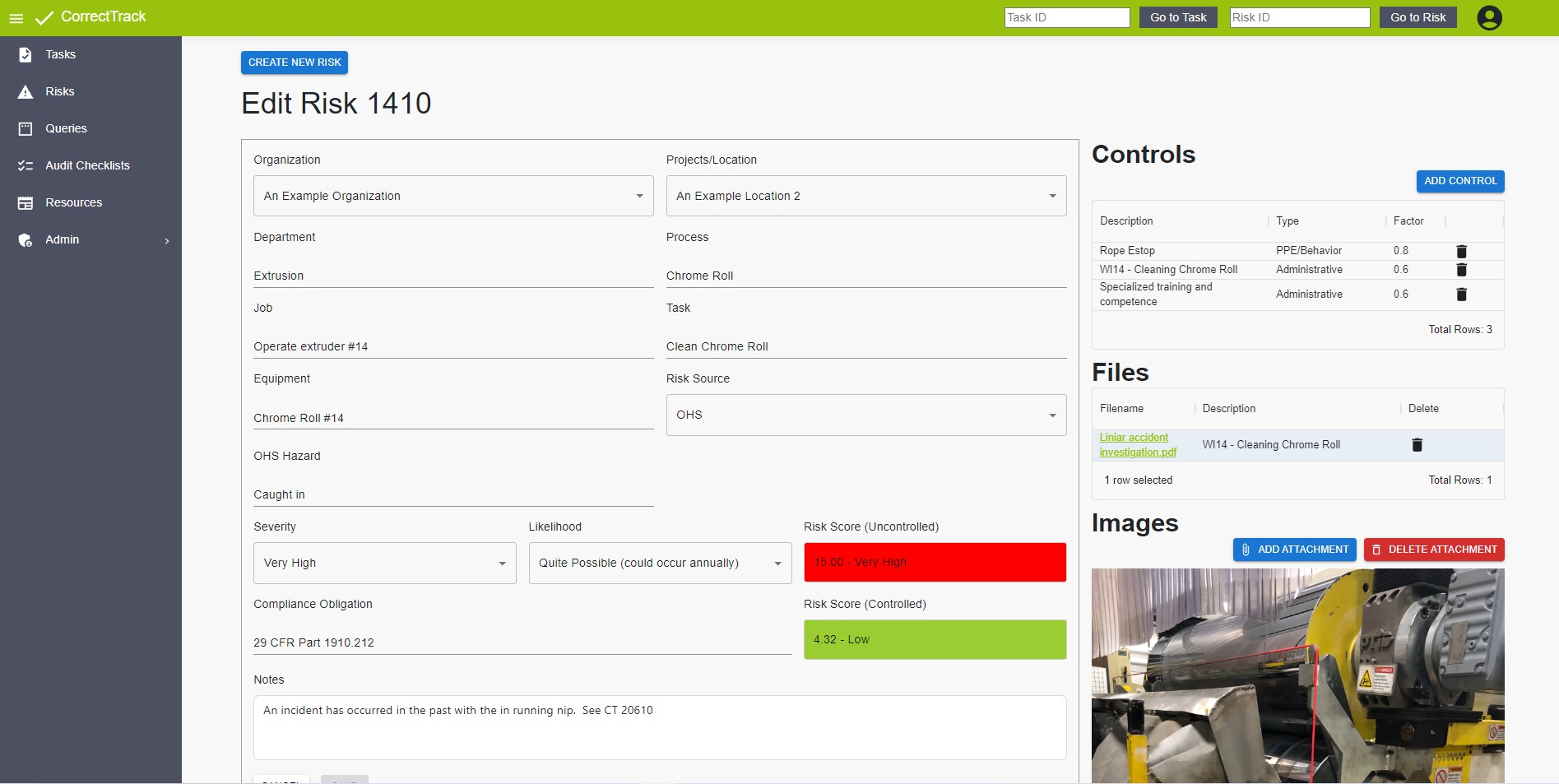Sustainability Risk Management for Business
What is Sustainability Risk?

Organization need to manage many types of risk as they pursue opportunities for gain. These included non-financial risk areas like environmental and occupational health and safety (EHS) risks. Examples are risk to the environment from emission of green house gasses or risk of employee exposure to hazardous chemicals. There are many EHS risks to sustainability that need to be considered and addressed.
Risk Analysis for Sustainability
CorrectTrack uses a semiquantitative risk analysis approach that helps organizations inventory, prioritize, and control EHS risk. Systematic risk management reduces operational costs, financial loss and potential injury to workers. CorrectTrack makes it easy to show evidence of risk reduction actions. CorrectTrack creates linkages between the risk and its controls to address the risk. This linkage helps analyze the risk and determine if it is above the organizations risk tolerance threshold. CorrectTrack is capable of handling any type of non-financial risk the organizations may face. The following is a brief description of a few types of risks CorrectTrack helps manage
Occupational Health and Safety Risk
Safety at work is of the highest priority. Ensuring a safe workplace starts with an honest evaluation of OH&S risk control. CorrectTrack helps identify and track OH&S hazards, risks and regulatory compliance obligations and to control potential injuries and ill health in the workplace. OH&S risk analysis is not an exact science but CorrectTrack helps communicate risk to those who need to know about it.

Environmental Risk
Environmental risks threaten profits and reputation. Identifying risks and prioritizing them for improvement helps protect the planet and the organization’s profit. The CorrectTrack risk analysis features help identify, prioritize and address potential environmental aspects and impacts. CorrectTrack also links the environmental aspect to the control in place to reduce the risk to a level that is tolerable by the organization.

Quality Risk
Delighted customers are the lifeblood of profit and successful business. CorrectTrack uses semi-quantitative risk analysis tools to identify and prioritize risks to product quality and customers. This helps organizations visualize and analyze potential risk treatment options. Linking the controls to the potential quality defects support audits and makes the checking part of the management systems easier and more effective.,

Example OHS Risk in CorrectTrack

